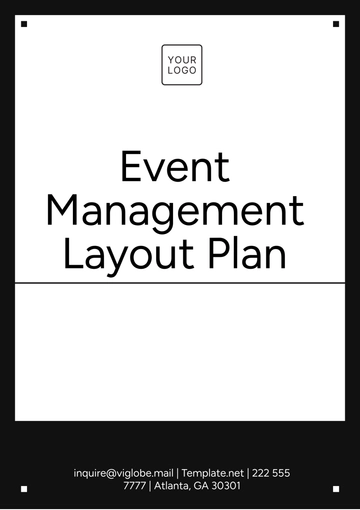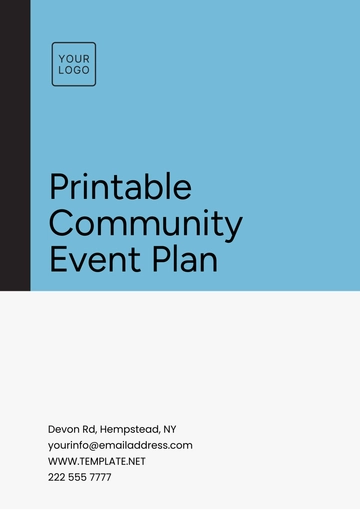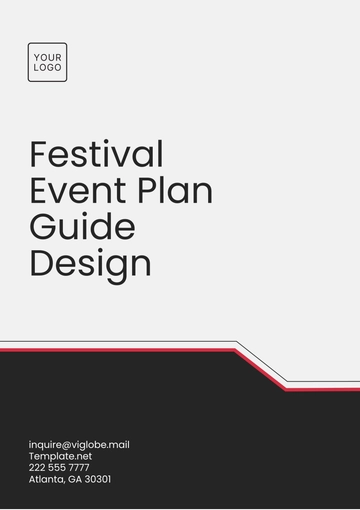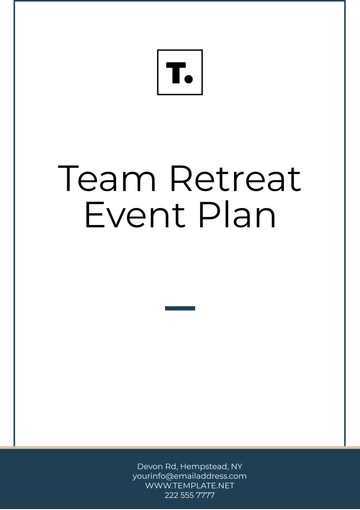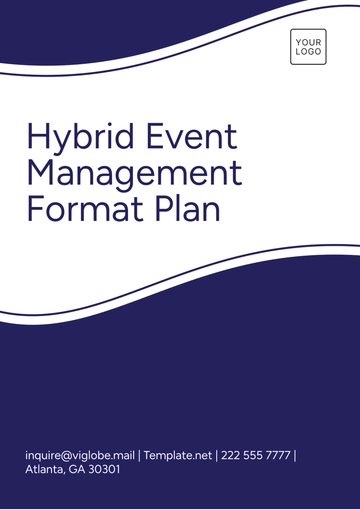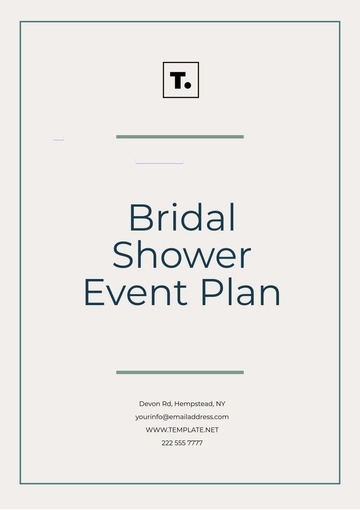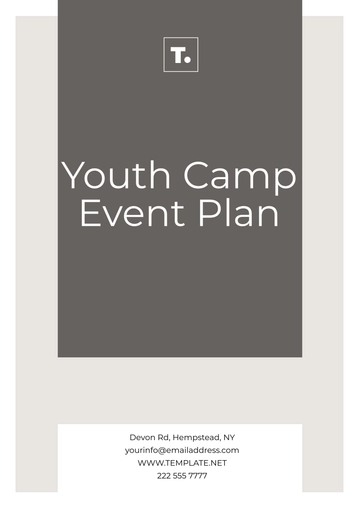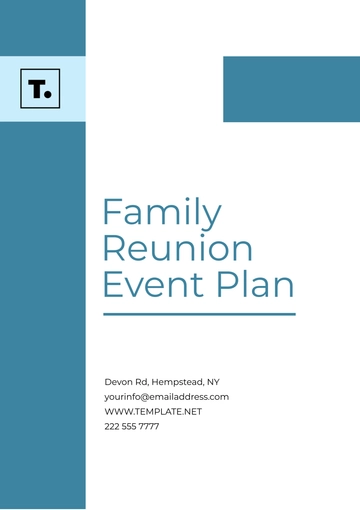Free Aesthetic Dinner Party Event Plan

I. Introduction
Hosting a memorable dinner party requires meticulous planning and attention to detail. This comprehensive event plan outlines key steps to ensure a flawless evening filled with delightful food, engaging conversations, and a warm ambiance that will leave a lasting impression on all your guests.
II. Planning the Dinner Party
A. Setting the Date and Time
Select a date and time that accommodates the schedules of your primary guests. Consider weekends or evenings that avoid common conflicts, such as holidays or prior commitments. Provide guests with ample notice.
B. Creating the Guest List
Craft a well-considered guest list, ensuring a balanced mix of personalities and relationships that will complement the dynamics of the event. Factor in the size of your venue to ensure a comfortable and intimate atmosphere.
C. Choosing the Theme and Style
Set a consistent theme or style to ensure unity across the event, regardless if it's a formal dinner, a laid-back get-together, or a themed celebration like a Mediterranean night, black-tie affair, or rustic chic event; let this theme guide the decoration, menu, and ambiance, and communicate any dress codes ahead of time to match the theme.
D. Selecting the Venue
Decide whether to host the dinner at home or rent an external venue. Consider factors such as space, cost, parking, and amenities like kitchen facilities. If an outdoor space is involved, have contingency plans in case of inclement weather.
III. Budget Planning
Expense Category | Estimated Cost | Notes |
|---|---|---|
Venue Rental | $0 - $500 | If hosting at home, no cost; otherwise, research local venues. |
Invitations | $50 - $100 | Printing and postage or digital invitations. |
Decorations | $100 - $300 | Table settings, centerpieces, lighting, etc. |
Food and Beverages | $300 - $600 | Catering costs or groceries for homemade meals. |
Entertainment | $50 - $200 | Music, games, or live entertainment. |
Miscellaneous | $50 - $100 | Extra items like party favors or last-minute needs. |
Total Estimated Cost | $600 - $1,900 |
Tips for Budgeting:
Prioritize essential items and allocate funds accordingly.
Consider DIY options for decor or entertainment to save costs.
Keep track of all expenses to avoid overspending.
IV. Menu Planning
A. Designing the Menu
Curate a diverse and enticing menu that suits a range of dietary preferences and restrictions. Offer an array of appetizers, main courses, desserts, and beverages. Aim for a balance of flavors, textures, and seasonal ingredients. Incorporating both vegetarian and non-vegetarian options ensures inclusivity.
Appetizers: Bruschetta with tomatoes and basil, artisanal cheese platter with fruit and nuts
Main Courses: Herb-marinated grilled chicken, creamy vegetarian lasagna
Desserts: Decadent chocolate mousse, tangy fruit tart
Beverages: Assorted wines, sparkling water, soft drinks, and a signature cocktail
B. Hiring a Caterer or Cooking
Decide whether to take on the responsibility of cooking or to hire a professional caterer. If opting for a caterer, conduct research, check reviews, and schedule tastings well in advance. Ensure they can accommodate any special dietary needs your guests may have. If cooking yourself, plan to prepare dishes that can be made ahead of time to reduce stress on the day of the event.
V. Preparing for the Event
A. Sending Invitations
Send personalized invitations via email or printed cards at least two weeks in advance. Include the date, time, venue, RSVP information, and any special instructions (such as dress code or parking details). Consider a digital RSVP platform to easily track responses.
B. Decorating the Venue
Align the decor with the chosen theme, paying attention to lighting, table settings, and centerpieces. Candles, fresh flowers, or elegant linens can enhance the overall ambiance. Don’t forget to match the dinnerware and glassware to the mood of the event.
C. Arranging Seating
Thoughtfully organize seating to foster conversation and a comfortable environment. Mix up social groups to encourage new connections, while ensuring that each guest feels at ease with those nearby.
D. Organizing Entertainment
To maintain a lively atmosphere, incorporate light entertainment. Soft background music, a live band, or even a curated playlist can set the tone. For more interactive gatherings, consider incorporating simple games or a wine-tasting session between courses.
VI. During the Event
A. Welcoming Guests
Greet each guest personally upon arrival, offering a warm welcome and an aperitif if desired. Facilitate introductions between guests who may not know each other, establishing a convivial atmosphere early on.
B. Coordinating Dinner Service
Manage the flow of dinner service seamlessly, ensuring that each course is served on time and at the appropriate temperature. A well-paced meal enhances the overall experience, allowing guests to enjoy the food and conversation without feeling rushed.
C. Managing the Flow of Events
Guide the transitions between different parts of the evening—whether it’s moving from cocktails to the dining table or from dinner to dessert. Keep the atmosphere relaxed and ensure a smooth progression of activities.
VII. After the Event
A. Thanking Guests
Express your appreciation by thanking your guests for attending. This can be done as they leave or afterward with a thoughtful thank-you note or message. If the evening included special moments (like a toast or speech), mention these in your message to make it personal.
B. Evaluating the Event
After the evening concludes, take some time to reflect on the success of the event. Consider guest feedback, any unexpected challenges, and the overall flow. Use this information to refine your planning process for future gatherings.
- 100% Customizable, free editor
- Access 1 Million+ Templates, photo’s & graphics
- Download or share as a template
- Click and replace photos, graphics, text, backgrounds
- Resize, crop, AI write & more
- Access advanced editor
Elevate your gatherings with the Aesthetic Dinner Party Event Plan Template from Template.net. This editable and customizable template is designed to streamline your planning process, allowing you to tailor every detail to your taste. Easily adjust colors, fonts, and layouts using our AI Editor Tool for a stunning presentation that impresses your guests.
You may also like
- Finance Plan
- Construction Plan
- Sales Plan
- Development Plan
- Career Plan
- Budget Plan
- HR Plan
- Education Plan
- Transition Plan
- Work Plan
- Training Plan
- Communication Plan
- Operation Plan
- Health And Safety Plan
- Strategy Plan
- Professional Development Plan
- Advertising Plan
- Risk Management Plan
- Restaurant Plan
- School Plan
- Nursing Home Patient Care Plan
- Nursing Care Plan
- Plan Event
- Startup Plan
- Social Media Plan
- Staffing Plan
- Annual Plan
- Content Plan
- Payment Plan
- Implementation Plan
- Hotel Plan
- Workout Plan
- Accounting Plan
- Campaign Plan
- Essay Plan
- 30 60 90 Day Plan
- Research Plan
- Recruitment Plan
- 90 Day Plan
- Quarterly Plan
- Emergency Plan
- 5 Year Plan
- Gym Plan
- Personal Plan
- IT and Software Plan
- Treatment Plan
- Real Estate Plan
- Law Firm Plan
- Healthcare Plan
- Improvement Plan
- Media Plan
- 5 Year Business Plan
- Learning Plan
- Marketing Campaign Plan
- Travel Agency Plan
- Cleaning Services Plan
- Interior Design Plan
- Performance Plan
- PR Plan
- Birth Plan
- Life Plan
- SEO Plan
- Disaster Recovery Plan
- Continuity Plan
- Launch Plan
- Legal Plan
- Behavior Plan
- Performance Improvement Plan
- Salon Plan
- Security Plan
- Security Management Plan
- Employee Development Plan
- Quality Plan
- Service Improvement Plan
- Growth Plan
- Incident Response Plan
- Basketball Plan
- Emergency Action Plan
- Product Launch Plan
- Spa Plan
- Employee Training Plan
- Data Analysis Plan
- Employee Action Plan
- Territory Plan
- Audit Plan
- Classroom Plan
- Activity Plan
- Parenting Plan
- Care Plan
- Project Execution Plan
- Exercise Plan
- Internship Plan
- Software Development Plan
- Continuous Improvement Plan
- Leave Plan
- 90 Day Sales Plan
- Advertising Agency Plan
- Employee Transition Plan
- Smart Action Plan
- Workplace Safety Plan
- Behavior Change Plan
- Contingency Plan
- Continuity of Operations Plan
- Health Plan
- Quality Control Plan
- Self Plan
- Sports Development Plan
- Change Management Plan
- Ecommerce Plan
- Personal Financial Plan
- Process Improvement Plan
- 30-60-90 Day Sales Plan
- Crisis Management Plan
- Engagement Plan
- Execution Plan
- Pandemic Plan
- Quality Assurance Plan
- Service Continuity Plan
- Agile Project Plan
- Fundraising Plan
- Job Transition Plan
- Asset Maintenance Plan
- Maintenance Plan
- Software Test Plan
- Staff Training and Development Plan
- 3 Year Plan
- Brand Activation Plan
- Release Plan
- Resource Plan
- Risk Mitigation Plan
- Teacher Plan
- 30 60 90 Day Plan for New Manager
- Food Safety Plan
- Food Truck Plan
- Hiring Plan
- Quality Management Plan
- Wellness Plan
- Behavior Intervention Plan
- Bonus Plan
- Investment Plan
- Maternity Leave Plan
- Pandemic Response Plan
- Succession Planning
- Coaching Plan
- Configuration Management Plan
- Remote Work Plan
- Self Care Plan
- Teaching Plan
- 100-Day Plan
- HACCP Plan
- Student Plan
- Sustainability Plan
- 30 60 90 Day Plan for Interview
- Access Plan
- Site Specific Safety Plan




